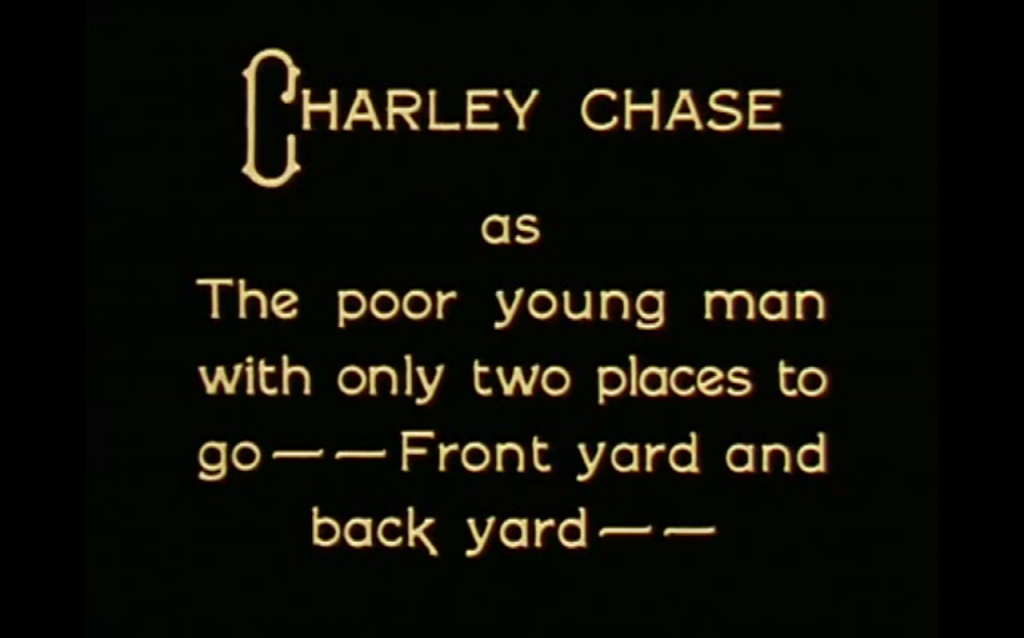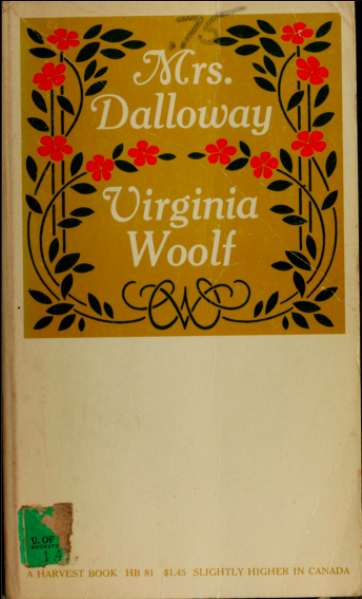On January 1st, 2021, many books, movies and other media from 1925 will enter the public domain in the United States. Some of them are quite famous — jump ahead to see lists of those well known books and movies that you can enjoy on the Internet Archive — or take the scenic route with me.
What does this all mean? Essentially, many items created in 1925 in the US that are still under copyright will become free and open for people to use in any way they see fit in the new year. But check out Duke Law’s Center for the Study of the Public Domain article for a more in-depth explanation.
We have a party every year to celebrate the new works entering the public domain, and this year is no exception. Join us on Thursday, Dec. 17th to toast these newly available additions.
Traveling from Home
As part of this yearly ritual, I explore our collections to unearth these newly freed items, and I invariably run across a few things that hit a nerve. This year, it started with this intertitle in “Isn’t Life Terrible?” Less than 20 seconds into this 1925 film, and suddenly I’m dumped back into 2020.

Rude, right? I don’t even have a front yard to enjoy during shelter in place.
But the magic of media is that it can transport us to different places and times. Photo books like Picturesque Italy, Picturesque Mexico, and Picturesque Palestine, Arabia and Syria show us both how much and how little has changed in the past 95 years.

Gondolas still glide under the Bridge of Sighs, and the Tower of Pisa is still leaning, but the 1925 version of the Colosseum certainly lacks today’s fake gladiator photo ops.
Looking at the past with the eyes of today
Every toe dipped into the past has the potential to surprise or shock. The story of a pantry shelf, an outline history of grocery specialties is only mildly interesting on the surface. Essentially, it’s a sales pitch to food manufacturers encouraging them to advertise in a set of women’s magazines. The book contains short case histories of successful food brands like Maxwell House Coffee, Campbell Soup, Coca Cola, etc. (all of whom advertise with them, naturally).
The book gives you a glimpse of why people were so enthusiastic about mass produced, packaged foods. Unsanitary conditions, bugs in your sugar, milk going bad over night; things modern shoppers never think about.
It puts this glowing praise of Kraft Cheese into perspective: “…a pasteurized product, blended to obtain a uniformity of quality and flavor, a thing greatly lacking in ordinary types of cheese.” (page 149)
That’s pretty entertaining if you’re a cheese lover. I think most people would agree that Kraft cheese is no longer on the cutting edge.
But keep poking around and you find a much deeper cultural divergence. While The story of a pantry shelf is extolling the virtues of the home economics training available at Cornell, you stumble across this horrifying sentence (page 12).

I was not expecting to read about orphaned babies being used as “learning aids” while flipping through stories about Jell-O. Intellectually, I know that attitudes towards children have changed over the years — the Fair Labor Standards Act, which set federal standards for child labor, wasn’t even passed until 1938. But this casual aside tossed in amongst the marketing hype still packs an emotional punch. It’s important to remember how far we have come.
Even writing that was forward-thinking for the time, like the booklet Homo-sexual life, is terribly backward according to today’s standards. It’s from the Little Blue Book series — we have many that were published in 1925, and the publisher was quite prolific for many years. The series provided working class people with inexpensive access to all kinds of topics including philosophy, sexuality, science, religion, law, and government. Post WWII, they published criticism of J. Edgar Hoover and the founder was subsequently targeted by the FBI for tax evasion. But in 1925, they were going strong and one of their prolific writers was Clarence Darrow.
Controversies of the Age
Darrow was writing about prohibition for the Little Blue Book series in 1925, but that is also the year he defended John T. Scopes for teaching evolution in his Tennessee classroom. The Scopes Trial generated a huge amount of publicity, pitting religion against science, and even giving rise to popular songs like these two 78rpm recordings from 1925.
The John T. Scopes Trial (The Old Religion’s Better After All) by Vernon Dalhart and Company
Monkey Biz-ness (Down in Tennessee) by International Novelty Orchestra with Billy Murray
Like the Scopes trial, prohibition had its passionate adherents and detractors. This was the “Roaring 20s” — the year The Great Gatsby was published — with speakeasies and flappers and iconic cocktails. And yet the pro-prohibition silent film Episodes in the Life of a Gin Bottle follows a bottle around as it lures people into a state of dissolution.
We even see an entire book about throwing parties that includes no alcoholic beverages at all.
The more things change, the more they stay the same
But as much as some things have changed, other aspects of our lives remain unchanged. People still want to tell you about their pets, rely on self help books, read stories to their kids, follow celebrities, tell each other jokes, and make silly videos.
And the most unchanging part of this particular season, of course — children still anticipate the arrival of Santa Claus with questions, wishes and schemes.
The silent film Santa Claus features two children who want to know where Saint Nick lives and how he spends his time. We follow him to the North Pole (Alaska in disguise) to see Santa’s workshop, snow castle, reindeer, and friends and neighbors. Jack Frost, introduced around 14:20, appears to be wearing the prototype for Ralphie’s bunny suit in “A Christmas Story” (but with a magic wand). Stick around for the sleigh crash at 20:45, and right around 22:20 Santa wipes out on the ice.
And just in case you’re still doing your holiday shopping, I feel like I should pass on a recommendation from this ad in a 1925 The Billboard magazine: Armadillo Baskets make beautiful Christmas gifts. And you can still buy vintage versions online – trust me, I looked. You’re welcome.

The Famous Stuff
And now on to the blockbusters of 1925…
Books First Published in 1925
- The Great Gatsby by F. Scott Fitzgerald
- Mrs. Dalloway by Virginia Woolf
- Der Prozess by Franz Kafka (The trial in English)
- The professor’s house by Willa Cather
- No more parades by Ford Madox Ford
- The Thundering Herd by Zane Grey
- Arrowsmith by Sinclair Lewis
- The mother’s recompense by Edith Wharton
- The writing of fiction by Edith Wharton
- Christina Alberta’s father by H. G. Wells
- A year of prophesying by H. G. Wells
- Wild Geese by Martha Ostenso
- Manhattan transfer John Dos Passos
- Porgy by DuBose Heyward (became Porgy & Bess in 1935)
- Gentlemen prefer blondes by Anita Loos
Movies Released in 1925
- The Big parade
- The Freshman (Harold Lloyd)
- The Gold Rush (Charlie Chaplin)
- The Lost World
- Don Q Son of Zorro (douglas fairbanks)
- Little Annie Rooney (mary pickford)
- The Phantom of the Opera (Lon Chaney)
- The Unholy Three (Lon Chaney)
- Ben Hur (Ramon Novarro)
- Curses (Fatty Arbuckle)
- The Eagle (Rudolph Valentino)
- Go West (Buster Keaton)
- The Lady (Norma Talmadge)
- The Monster (Lon Chaney)
- The Plastic Age (Clara Bow)
- Seven Chances (Buster Keaton)
- The Wizard of Oz (Oliver Hardy)
- Lady of the Night (Norma Shearer)

Woow! what a nice one coming to us. For the fact that it is free gives me an extra joy. I love this.
I love to read an old book too
Pingback: Public Domain Day 2021 – Agnes Scott College, McCain Library
It’s too bad Disney used their political pull to extend the copyright period to 90 years after the death (!) of the creator—all because they realized, to their horror, that Mickey Mouse (created in the 1920s) would soon go public domain. As a result, nothing created in any of our lifetimes will ever be freely accessible to us. Copyright was never intended to protect the profits of corporations, but to assure that creative works—after a REASONABLE period of profit—would become freely available for the enrichment of society, as part of its culture. But no—greed wins, once again, or at least until someone has the courage and influence to challenge it!
hello
i agree withe the other post somebody need to do something but who and what ?
Perhaps everybody can start at his door ? like the internet archive
In the ia you can found manny book who fall into public domain in 2021 but for now they are on the borow category perhaps it is good to change it ? and make them free to all ?
Our city’s online library provided the use of books via the Internet, and I was able to read my clothing design books for free.
فروشگاه اینترنتی هفت رنگه
government control over both patent and copywright does not deliver as promised. Instead of advancing knowledge it is used to suppress knowledge. Industry and government colluded to create a system of command and control over knowledge itself, which they monetize to mutual benefit.
Change the laws to advance society and public knowledge by radically restricting the duration. Clip it to 15 years, no extensions.
How about songs from 1925 coming into public domain? Thanks!
Music is tricky. We understand from the experts that the sheet music from certain songs are coming into the public domain, but not the recordings. Click the link to the article from Duke for some of those songs.